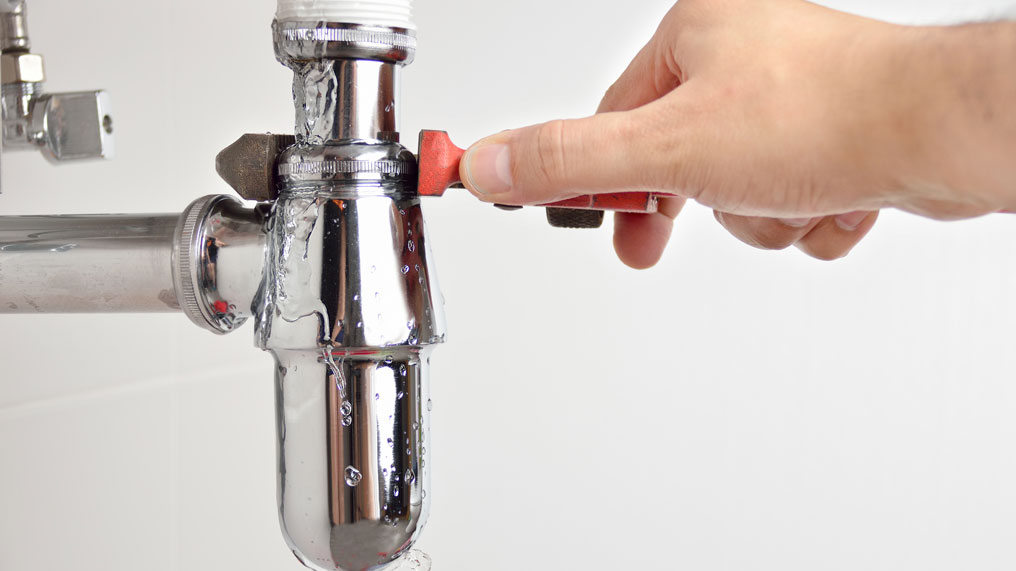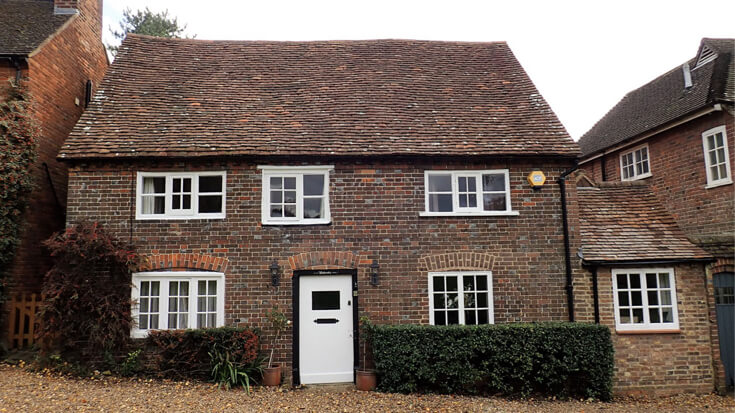Most of us have probably lived in a house at some point that's had a leaking tap or dribbling toilet cistern. Although these leaks are relatively minor compared to a burst pipe in the home, they can still cause damage over time (and could cost you a lot of money if you're on a water meter).
Here are some common water leaks you’ll find around the home, some that can be tackled by a competent DIY’er, while others will need the attention of a plumber.
Fixing a leaking tap
A leaking tap is usually a sign that the washer is wearing out. This is one of those home repair jobs that most people can do themselves, but if you really don’t feel confident fixing a leaky tap, then call out a plumber or good handyman.
Before investigating, be sure to turn off the water supply. Your sink or bath may have an isolator valve running to it, but if not, use the stopcock to turn off the water. You can then open up the tap and inspect the washer before replacing it.
Fixing a leaking sink
Fixing a leaking sink can be trickier than a dribbling tap, but it’s not beyond the skill of most people. However, it can get dirty and it’s often difficult to get to the problem. But usually a leaking sink is caused by one of three issues:
-
A leak in the water hose. This kind of leak will cause a lot of mess, usually spraying water all over the place.
-
A leak in the drain line. If water appears when you let the tap run down the drain, or empty a full sink, then you have a leak somewhere in the drain line.
-
A faulty sink drain seal. It could be that there is a leak in the seal around the plughole of your sink. The easiest way to work this out is to fill the sink and leave it. If the water level drops or you have moisture appearing beneath the sink then the seal around the hole isn’t sound.

Fixing a leaking bath
A leaking bath in an upstairs bathroom can cause serious damage to floors and ceilings, so make sure you spot it early and get it fixed quickly.
The most common causes of a leaking bath are:
-
Poor seal around wastes. If the seal around the plughole or the overflow is broken then the bath can leak when full.
-
Caulk around the tub failing. If you have a shower over your bath, this otherwise minor issue could result in a lot of water damage. If the sealant around the edge of the tub and the tiles/wall has degraded, then moisture can seep through it.
-
Leaking pipes. The pipes that feed into the bath taps or shower could well be leaking. This can be hard to see without removing the side panel of the bath.
If your bathroom is upstairs, a common indicator of a water leak is staining and damage to the ceiling of the room below.
Fixing a leaking shower
If you have a shower enclosure then there are several areas from which a leak can occur, and most of them are similar to a bath leak - so check the wastes, all sealant joints and any pipe work.
The problem with leaking pipes can be that they're often buried in a wall behind tiles, so aren’t always easy to get at. However, if you have a leak here, the damage should be apparent by the tiles lifting. Because of the amount of water that flows through a shower, it’s important to fix a leaking shower as soon as possible.
Fixing a leaking toilet
Of all the leaks you can get in the home, a leaking toilet can be the most irritating and unsanitary. It’s also an item that can leak in a lot of different ways:
-
Crack in the bowl or tank. This can leak a lot of water and means you'll probably need to replace the toilet or the section that's affected.
-
Broken or damaged ballcock and float. The ballcock and float valve regulates the intake of water into the cistern after the toilet has been flushed. If this is damaged or broken, the tank will continue to fill up and can overflow.
-
Worn feed line. The feed line brings water into the tank after flushing. It can become damaged over time, and would allow water to continually enter the tank.
-
Faulty fill valve. The fill valve regulates the intake of water from the feed line into the cistern. If it breaks, it will allow water to constantly trickle into the cistern.
-
Blocked overflow. If the toilet cistern overflow is blocked and you have a faulty fill valve or a similar problem, then the tank may well overflow.
Sometimes a leaking toilet can be repaired, other times the toilet may need to be replaced entirely. Either way, because of the huge amounts of water a toilet uses, it’s important to get the problem sorted as soon as you can.
Fixing a leaking radiator
A leaking radiator can often go unnoticed for some time but can damage flooring, wiring and ceilings. Usually a leaky radiator is caused by:
-
Leaking valves. Often caused by the spindle in the valve wearing out, this type of leak usually only occurs when the valve is partially open. Replacing a valve requires you to drain the system, replace the valve and then refill the heating system and bleed the radiators. It’s a fiddly job and one best left to a plumber or heating specialist.
-
Leaking valve spindles. Sometimes the spindle within the valve just needs tightening up. You can do this by removing the valve cover and then tightening the nut within the spindle. But if this doesn’t work, the whole spindle might need replacing - so it’s probably time to call in a professional.
-
Leaking radiator valve/pipe coupling. This issue can often be sorted by tightening up the coupling nut. But try not to over tighten the nut because you can strip it or break the joint. If this doesn’t work, it could be that the valve itself needs replacing. Again, this requires draining and refilling the system.
-
Corrosion. Corrosion on the radiator pipes, especially at the joints, is a common problem because the metal in the system is constantly exposed to water. Pipework and even entire radiators may need replacing, so this repair is best handled by a plumber.
These are some of the common water leaks you’ll find in the home. If you have a leak, you should always take the time to work out where the water is coming from, and turn off the water supply before calling a plumber or undertaking any repairs yourself.




